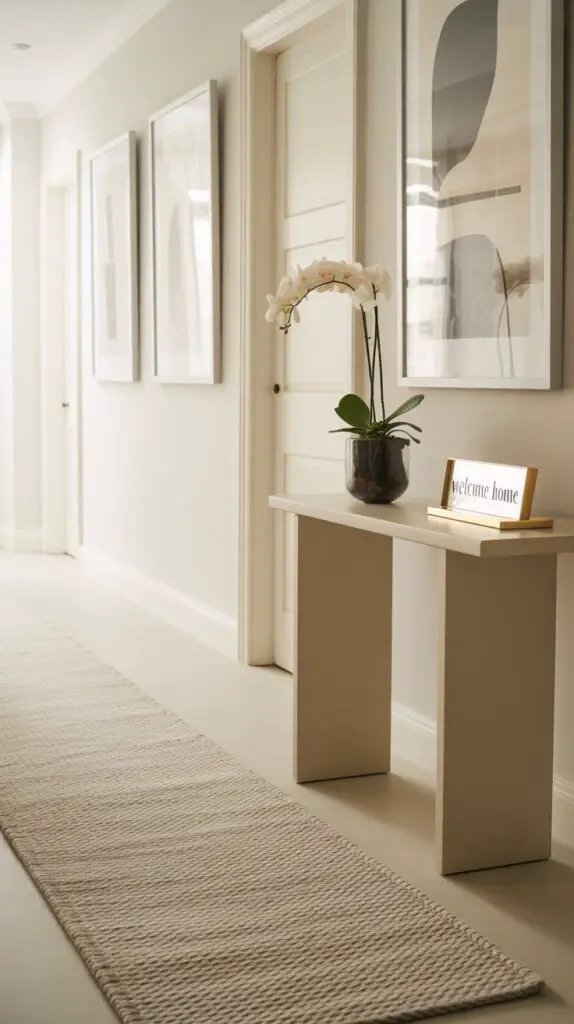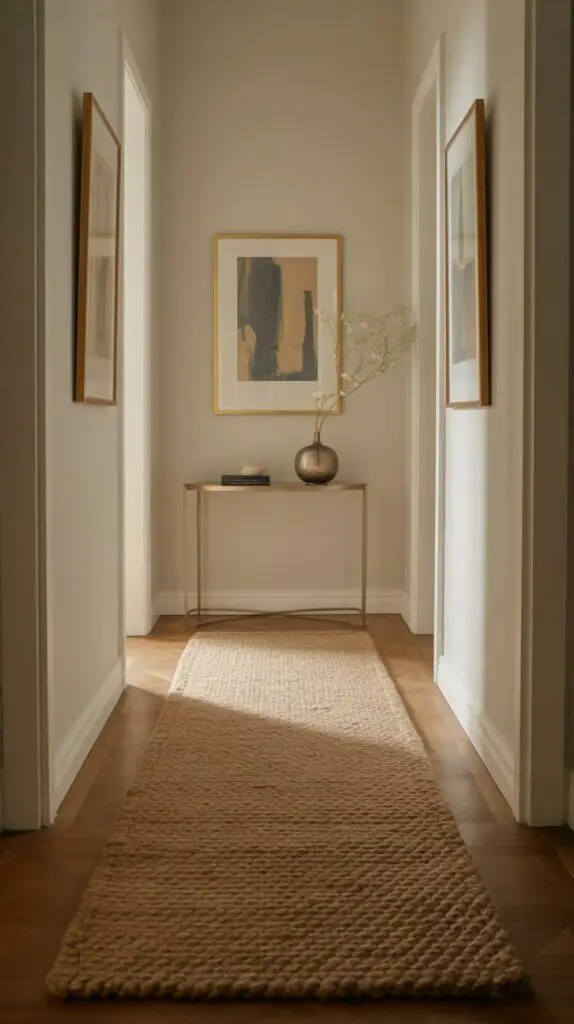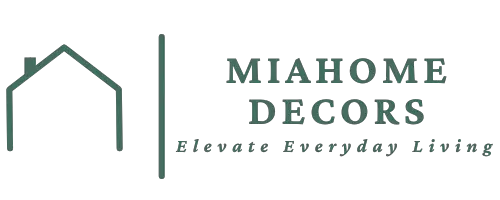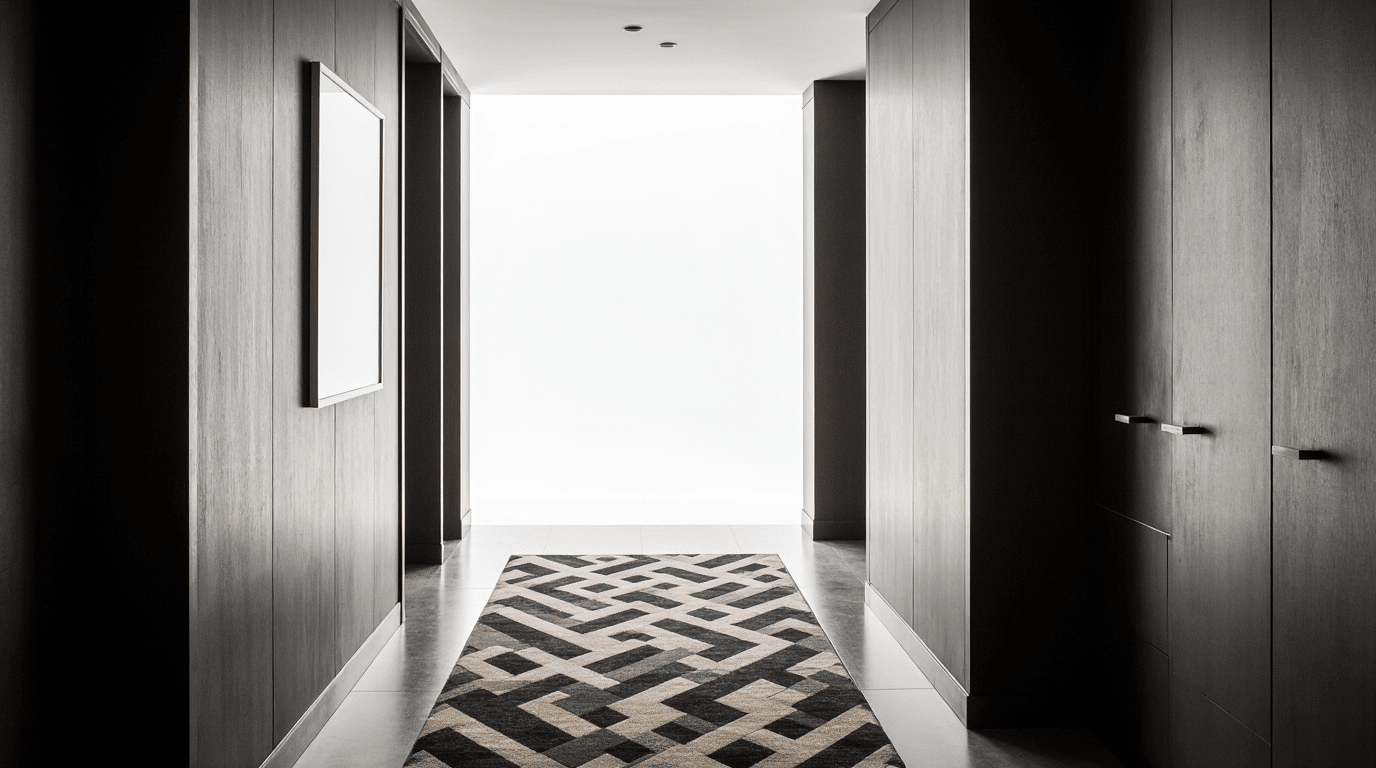Stylish Hallway Runner Designs to Add Texture and Warmth: Transform Your Space with Elegance
Table of Contents
Introduction
Hallways are often one of the most overlooked spaces in a home. They are the passageways between rooms, typically narrow, and sometimes neglected when it comes to design. However, with a few strategic touches, hallways can be transformed into inviting spaces that add character and charm to your home. One of the easiest and most effective ways to enhance the look of your hallway is by incorporating a hallway runner.
Hallway runners, typically long and narrow rugs, serve as both a functional and aesthetic addition to your home. Not only do they protect your floors from wear and tear, but they also inject warmth, texture, and color into the space. With the right design, a hallway runner can make your hallway feel more connected to the rest of your home while adding style and personality.
In this post, we’ll explore various hallway runner designs that can elevate the look of your hallway. From choosing the right material to selecting the perfect color and pattern, we’ll guide you through every detail. Whether you’re working with a short or long hallway, contemporary or traditional décor, these ideas will help you create a stylish, welcoming atmosphere. Let’s dive into how hallway runners can transform your space.
1. The Power of Pattern: Adding Personality to Your Hallway
One of the easiest ways to bring a hallway to life is through pattern. Hallway runners are a perfect place to experiment with bold or intricate patterns without overwhelming the space. The right pattern can turn a simple hallway into a striking focal point, adding depth and character to a traditionally underutilized area.
When choosing a patterned runner, it’s important to consider the style of your home, as well as the feeling you want to evoke. A floral or geometric pattern can create a lively, vibrant atmosphere, while more subdued patterns, like stripes or chevrons, can add subtle elegance.
Here are some ideas for patterned hallway runners:
- Bold geometric designs: Perfect for modern or contemporary interiors, geometric patterns add a striking visual element to the hallway. Choose colors that complement the overall palette of your space.
- Floral or vintage patterns: For a classic or bohemian look, floral patterns or vintage-inspired designs can add a touch of warmth and charm to the hallway.
- Striped runners: Stripes in varying widths and colors can elongate a short hallway, making it appear longer and more expansive. They can also add a structured look to more minimalist spaces.
Visual Breakdown: Hallway Runner Pattern Ideas
| Pattern Type | Best For | Design Tip |
| Geometric Designs | Modern or contemporary homes | Pair with minimalist furniture for contrast |
| Floral or Vintage | Traditional, bohemian, or vintage decor | Soft, muted tones work best in smaller spaces |
| Stripes | Small or narrow hallways | Horizontal stripes elongate narrow hallways |
2. Material Matters: Choosing the Right Fabric for Comfort and Durability
The material of your hallway runner plays a key role in both its functionality and aesthetic appeal. Hallways experience high foot traffic, so it’s essential to choose a durable material that can withstand wear and tear. At the same time, the fabric should provide a soft, comfortable feel underfoot, adding warmth and texture to the space.
Here are some popular materials to consider for your hallway runner:
- Wool: Known for its durability and softness, wool is a great choice for hallway runners. It resists dirt, is easy to clean, and provides a plush feel underfoot. Wool is also naturally flame-retardant and hypoallergenic.
- Cotton: Lightweight and soft, cotton runners are perfect for warmer climates or homes with low traffic. While not as durable as wool, cotton is easy to clean and comes in a variety of colors and patterns.
- Jute or sisal: These natural fibers offer a rustic, textured look, perfect for more organic or coastal interiors. They are highly durable and provide a unique tactile experience, but may not be as soft as wool or cotton.
- Synthetic fibers: Materials like polyester and nylon are highly durable and resistant to stains. They are also affordable and available in a range of designs, making them a good option for high-traffic areas.

3. Color Palettes: Setting the Mood with Warmth and Contrast
Color is one of the most powerful elements of interior design. A hallway runner can completely transform the atmosphere of the space depending on the colors you choose. Whether you want to create a cozy, intimate environment or a bright, airy feel, the right color palette can set the tone.
Here are some color ideas for hallway runners:
- Earthy tones: Shades of brown, beige, and terracotta evoke warmth and natural elegance. These colors work well in traditional, rustic, or bohemian-inspired spaces, creating a grounded and inviting atmosphere.
- Bold contrasts: For a more dramatic look, opt for high-contrast color combinations, such as black and white or deep navy with mustard yellow. These choices make a bold statement and work well in contemporary or eclectic spaces.
- Pastels and neutrals: Light colors like soft grays, pale blues, or muted greens can make a narrow hallway feel more expansive and airy. Pastels are perfect for a serene, understated look, ideal for a calm and peaceful atmosphere.
Visual Breakdown: Color Choices for Hallway Runners
| Color Palette | Best For | Design Tip |
| Earthy Tones | Traditional, rustic, or bohemian spaces | Complements natural wood and plants |
| Bold Contrasts | Modern or eclectic interiors | Pair with sleek, contemporary furniture |
| Pastels and Neutrals | Small or narrow hallways | Light colors make the space feel larger |
4. Hallway Runner Length: Choosing the Right Size for Your Space
The length and size of your hallway runner are crucial for achieving a well-proportioned look. Hallways come in all shapes and sizes, so it’s important to select a runner that fits your space perfectly. A runner that’s too short can feel out of place, while one that’s too long might overwhelm the hallway.
Here’s how to choose the right length for your hallway runner:
- Short hallways: If your hallway is short, a runner that covers the entire length of the space can help create a more cohesive look. Avoid a runner that’s too long, as it might make the space feel even smaller.
- Long hallways: For longer hallways, opt for a runner that extends along the full length of the corridor. Consider a runner with a design that creates visual interest and makes the hallway feel more inviting.
- Custom sizing: For irregularly shaped or unusually sized hallways, consider having a runner custom-made to ensure a perfect fit.

5. Layering for Depth: Combining Multiple Runners for Visual Interest
While one runner can be enough to make a statement, layering multiple runners in a hallway can create a more dynamic, textured look. This design technique is perfect for adding depth and richness to a large hallway or creating a cohesive flow in a smaller one.
Here’s how to layer hallway runners effectively:
- Varying sizes: Use two or three runners of different lengths to create a balanced and layered effect. Arrange them in a way that complements the overall layout of the hallway.
- Mixing patterns and colors: Layering runners with contrasting patterns or colors can create a unique look, but be sure to maintain some cohesion. Choose a color palette that ties the runners together, and experiment with geometric, striped, or patterned designs.
- Texture contrast: Combine different textures for added dimension. For example, layer a plush wool runner over a flatwoven jute one to contrast soft and rustic textures.
Visual Breakdown: Layering Hallway Runners
| Layering Type | Best For | Design Tip |
| Varying Sizes | Large or long hallways | Use different lengths to create flow |
| Mixing Patterns | Eclectic or bold spaces | Keep a cohesive color palette |
| Texture Contrast | Adding depth and interest | Combine soft and rustic textures |
6. Practical Considerations: Durability and Maintenance
While style is key, it’s also important to consider the practicality of your hallway runner. Hallways are high-traffic areas, and a runner must be durable and easy to clean to maintain its appeal over time.
Here’s how to choose a runner that is both beautiful and practical:
- High-traffic materials: Choose durable fabrics like wool, nylon, or polyester if your hallway sees a lot of traffic. These materials are resistant to stains, wear, and fading, making them ideal for high-use areas.
- Easy-to-clean options: Look for runners that are machine washable or easy to spot-clean. This is especially important in busy households or homes with pets and children.
- Non-slip backing: To prevent accidents, ensure that your runner has a non-slip backing or use rug pads to keep it securely in place.
Conclusion
A stylish hallway runner is a small but powerful design element that can transform the look and feel of your hallway. From adding texture and warmth to creating visual interest and depth, a well-chosen runner can enhance your space in many ways. By considering factors like pattern, material, color, and size, you can select the perfect hallway runner that suits your style and needs. Whether you opt for a bold, patterned runner or a subtle, neutral one, the right choice will elevate your hallway and create a welcoming atmosphere throughout your home.

